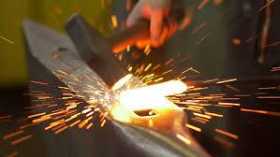
There were many horned gods in antiquity.
There's no evidence that any of them were “dying gods.”
(Osiris, perhaps the preeminent dying god of antiquity, was a horned god, it's true. But since most of the other gods—not to mention the goddesses—of ancient Egypt wore horns, but were never said to have died, it's questionable how much the case of Osiris can be said to prove.)
We have no evidence, for instance, that the Cernunnos of the Keltic world was a dying god, much less a dying-and-rising god. In a single story, Pan is said to have died (“Great Pan is dead!”), but this is a one-off story, not a mythology of an Eternal Return.
Yet, in the modern paganisms, the Horned God is preeminently He Who Dies and Rises: the great and sacred story of humanity's lifelong religious involvement with the animal species which, through the history of our kind, have been the source of our food.
Where, then, did this identification come from, if not from the ancient paganisms? Why do we think of the Horned as He Who Dies to Feed the People?






















